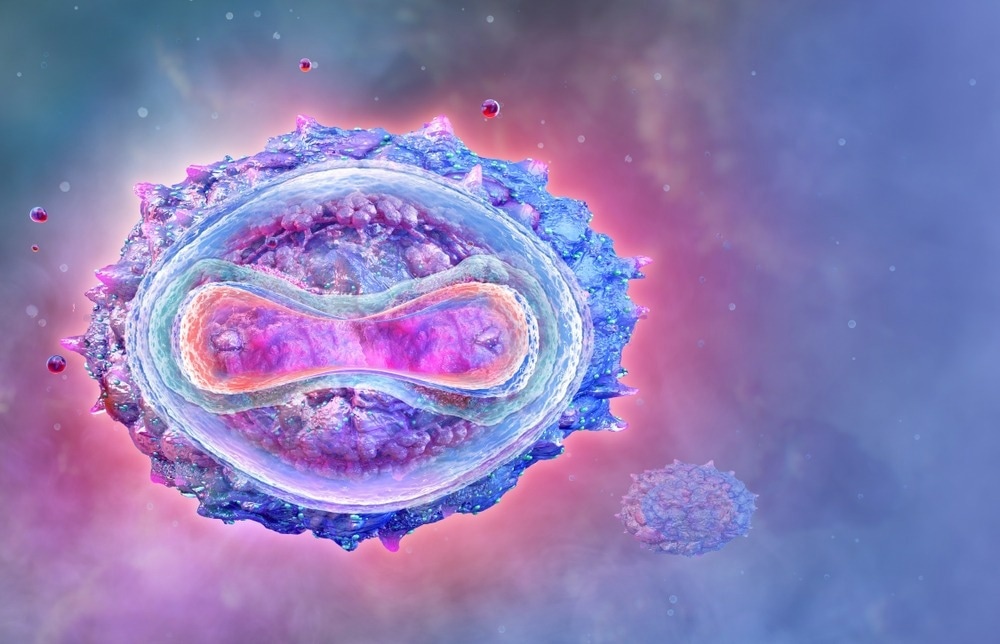In a recent study posted to the medRxiv* server, a team of researchers evaluated the performance of monkeypox virus (MPXV)-infected patients' self-collected versus physician-collected clinical samples, including skin lesions, pharyngeal, and rectal swabs in the diagnostic tests.

Background
Self-sampling has shown to be a reliable strategy for diagnosing sexually transmitted diseases (STDs), such as chlamydia and gonorrhea, based on nucleic acid amplification testing and recently coronavirus disease 2019 (COVID-19). However, this approach has not yet been tested and validated for Monkeypox diagnosis.
About the study
In the present study, researchers performed a diagnostic accuracy evaluation of self-sampling in the MPXV settings. They recruited individuals from three centers in Spain who presented with lesions indicating an MPXV infection within ten days before the study screening. A dermatologist or an STD specialist clinically assessed these patients and enrolled those in the study who were suspected of having MPXV infection.
All the study participants received a home testing kit with instructions, including dacron-tipped swabs for sample collection, pre-labeled swab containers, and a mailing envelope. The team trained these individuals for self-collection of samples and asked them to self-collect swabs from the skin lesions, the oropharynx, and the rectum on day 1 of the study.
The participants stored the self-collected samples at 4ºC after collection and contacted the courier service, which transferred these samples to a microbiology laboratory in Spain for diagnostic testing.
The researchers analyzed swabs using a quantitative polymerase chain reaction (qPCR), and all patients having positive samples collected by a physician on day 0 were included in the study analyses. All these participants had confirmed MPXV infection.
Study findings
In total, the study enrolled 50 patients with suspected MPXV infection. All the patients were male, with an average age of 33.5 years. They had qPCR-confirmed MPXV infection in at least one of the self-collected diagnostic specimens. At baseline, the number of skin lesions and pharyngeal and rectal swabs was 49, 38, and 11, respectively. All self-collected skin lesion swabs were positive for MPXV DNA. However, only 68% and 82% of oropharyngeal and rectal swabs were positive for MPXV DNA.
The researchers noted the highest overall agreement of 98% in skin lesional swabs. Surprisingly, only one individual tested negative in the physician-collected skin lesion swab and positive in the self-collected skin lesion swab sample. Likewise, the overall agreement for throat and rectal specimens was 79% and 90%, with kappa values of 0.49 and 0.6, respectively.
Furthermore, the researchers noted no significant differences in cycle threshold (CT) values between physician- and self-collected skin lesion and throat specimens. Conversely, self-collected rectal swabs had higher CT values than physician-collected samples, with an absolute difference of 5.5; and a 95% confidence interval (CI). The mean CT values of physician- and self-collected swabs were 22.5 and 23.2, respectively, with an absolute difference of 0.7; and a 95% CI.
Conclusions
According to the authors, this is the first study to demonstrate the feasibility of the self-sampling approach for the diagnosis of MPXV. Overall, self-collected swabs had high precision and comparable viral loads to physician-collected swabs. Patient-collected skin swabs are not typically used to diagnose common blistering skin diseases, such as herpes or varicella. However, these patient-collected swab samples from skin lesions had comparable high-performance characteristics to physician-collected swab samples.
The overall agreement between physician- and self-collected oropharyngeal swabs was lower than for other samples, most likely due to variation in the sample quality. However, fluctuations in viral load within the pharynx are also possible.
To summarize, the self-sampling approach explored in the current study offered many significant advantages for patients and disease control. It facilitated the integration of monkeypox into routine testing with other STDs in high-risk populations. Future studies should optimize sample collection and include more samples, such as saliva, to accentuate the ease of diagnostic testing.
*Important notice
medRxiv publishes preliminary scientific reports that are not peer-reviewed and, therefore, should not be regarded as conclusive, guide clinical practice/health-related behavior, or treated as established information.
- Ubals, M. et al. (2022) "Evaluating the accuracy of self-collected swabs for the diagnosis of monkeypox". medRxiv. doi: 10.1101/2022.09.19.22280087. https://www.medrxiv.org/content/10.1101/2022.09.19.22280087v1
Posted in: Medical Science News | Medical Research News | Disease/Infection News
Tags: Chlamydia, Coronavirus, covid-19, Diagnostic, DNA, Gonorrhea, Herpes, Laboratory, Microbiology, Monkeypox, Nucleic Acid, Polymerase, Polymerase Chain Reaction, Skin, Throat, Virus

Written by
Neha Mathur
Neha is a digital marketing professional based in Gurugram, India. She has a Master’s degree from the University of Rajasthan with a specialization in Biotechnology in 2008. She has experience in pre-clinical research as part of her research project in The Department of Toxicology at the prestigious Central Drug Research Institute (CDRI), Lucknow, India. She also holds a certification in C++ programming.
Source: Read Full Article
